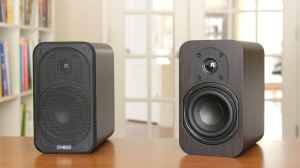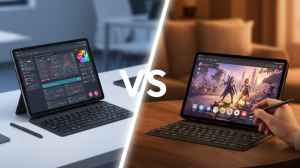Smartwatches are not just about the digital versions of analogue watches rather they are high tech devices that combine a range of features like health tracking capabilities, mobile alerts, and other smart features about your day to day life. The smartwatch and wearable technology market is constantly growing in the world, driven by innovations brought by the top technological companies like Google and Apple. The OS of a smartwatch is the core of these experiences and determines what features users will have access to, how the apps will work, and which devices can or cannot be compatible. Now the next question is that between watchOS and Wear OS which one is better. It is both crucial for consumers and developers to learn the technical and ecosystem differences between these two platforms in a way that allows the next generation of smartwatch to be a better version for your gadget zone.
What Is a Smartwatch Operating System?
A smartwatch operating system (OS) is the software system that is in charge of the fundamental functions of the device, hardware resource management, and the ability of the apps to operate and communicate with the mobile devices that are connected to the smartwatch. The best smartwatch OS includes:
- watchOS (Apple)
- Wear OS (formerly Android Wear, Google)
- Tizen (Samsung, older watches)
- Fitbit OS
- Garmin OS
- Pebble OS (legacy)
Key Features of Leading Smartwatch OS
Some of the key features of smartwatches includes health monitoring, app notifications, battery optimization and voice control. Essential features include:
- Activity and Health Tracking: Heart rate, steps, sleep, exercise.
- Alerts and Calls: Sync calls, messages, email, and calendar entries.
- Voice Assistants: Siri in watchOS, and Google Assistant in Wear OS.
- Wireless Connectivity: Bluetooth, Wi-Fi, LTE to go.
- App Store: watchOS App Store, Wear OS App Store.
- Personalizable Watch Faces: Widgets, information panels, and themes.
Understanding App Ecosystem: WatchOS vs Wear OS
A good application ecosystem that guarantees the use and longevity of the smart watches is one of the most crucial aspects of smart watches. Apple watchOS has millions of active users and an App Store of fitness, lifestyle, productivity, and wellness apps. The Wear OS, supported by key Android suppliers, gives broad platform access to apps through the Play Store, enabling the use of a variety of experiences on different device brands.
- Stand-Alone Apps: Stand-alone apps can now be used on each platform and no phone is needed on it or anywhere nearby, so they can be used during exercises or in transit.
- HealthKit and Google Fit: Health APIs are quite well integrated and can be utilized to enable advanced health and fitness tracking.
- Third-party App Development: Watch faces, productivity apps, smart home controls, and others represent a complete category of apps.
Here are some of the smartwatch models with such operating system and stunning features that lets you decide the ideal model for you.



